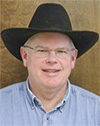The 2016 Idaho Range Livestock Symposium was a big success. The traveling symposium was held April 19 in Marsing, April 20 in Twin Falls, April 21 in Challis, and concluded with a range tour in the Challis area on April 22.
The symposium addressed issues to help livestock producers increase their understanding of techniques and science that will help improve management of their operations.
University of Idaho graduate student Chris Schachtschneider presented his master’s research designed to answer the question of whether or not grazing can reduce risk of wildfires. Schachtschneider’s data showed that grazing can significantly reduce fire behavior in areas with low shrub density. In areas of high shrub density, grazing has little or no effect as fire will carry through the brush. Information from Schachtschneider’s research should give validity to land managers’ efforts to create firebreaks in strategic locations.
University of Idaho Extension Beef Cattle Specialist Jim Sprinkle shared his research on how monitoring data can be used for adaptive management of rangelands. Sprinkle worked with ranchers and federal land managers in Arizona (prior to coming to Idaho) to improve rangeland monitoring and then use that data to adapt management to achieve specific resource goals. The program saw great success in Arizona, expanding to cover 1.5 million acres of rangeland.
Brooke Jacobson and Tyler Hamilton from the Idaho State Department of Agriculture shared information about the cooperative monitoring program launched a couple years ago with the BLM. Producers Chris Black (Marsing location) and Gary and Jackie Ingram (Challis location) shared their thoughts and experiences on rangeland monitoring. Black summed it up best with his statement, “If you’re a public lands rancher, you can’t afford not to do your own photo monitoring on your rangeland.”
The topic of conservation easements was discussed by members of the Northwest Rangeland Trust and the Lemhi Regional Land Trust. This topic was one of keen interest among producers. Speakers discussed the basics of land trusts and offered up a list of questions to be asked and considered for those thinking about pursuing a conservation easement.
The symposium concluded each day with a low-stress animal handling workshop conducted by Jim Keyes from Utah State University Extension in southeastern Utah. Keyes demonstrated and discussed the basics of low-stress handling. Keyes asked attendees, “What is the biggest problem that most people have when it comes to handling livestock?” The answer he was looking for was cited by most in attendance: “We get in too big of a hurry.” In other words, slow is fast, or if we don’t have time to do it on “cow time” – we don’t have time to do it. The animal handling workshop was sponsored by the Idaho Beef Quality Assurance program and the Idaho Beef Council.
The focus of the tour on the final day was to look at a conservation easement recently put in place on the Pahsimeroi River in the Custer and Lemhi counties. New water diversions, fish screens and water pipelines will not only protect water quality and fish, but will also ensure water delivery to area ranches long into the future. ![]()
PHOTO: Jim Keyes demonstrated and discussed the basics of low-stress handling to attendees at the Idaho Range Symposium in April. Photo provided by Scott Jensen.








